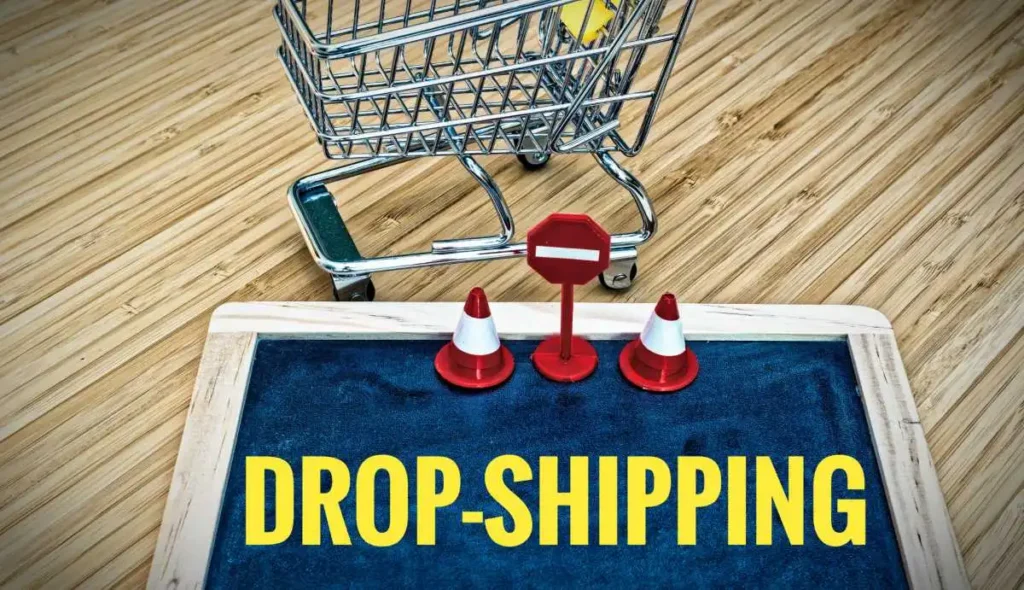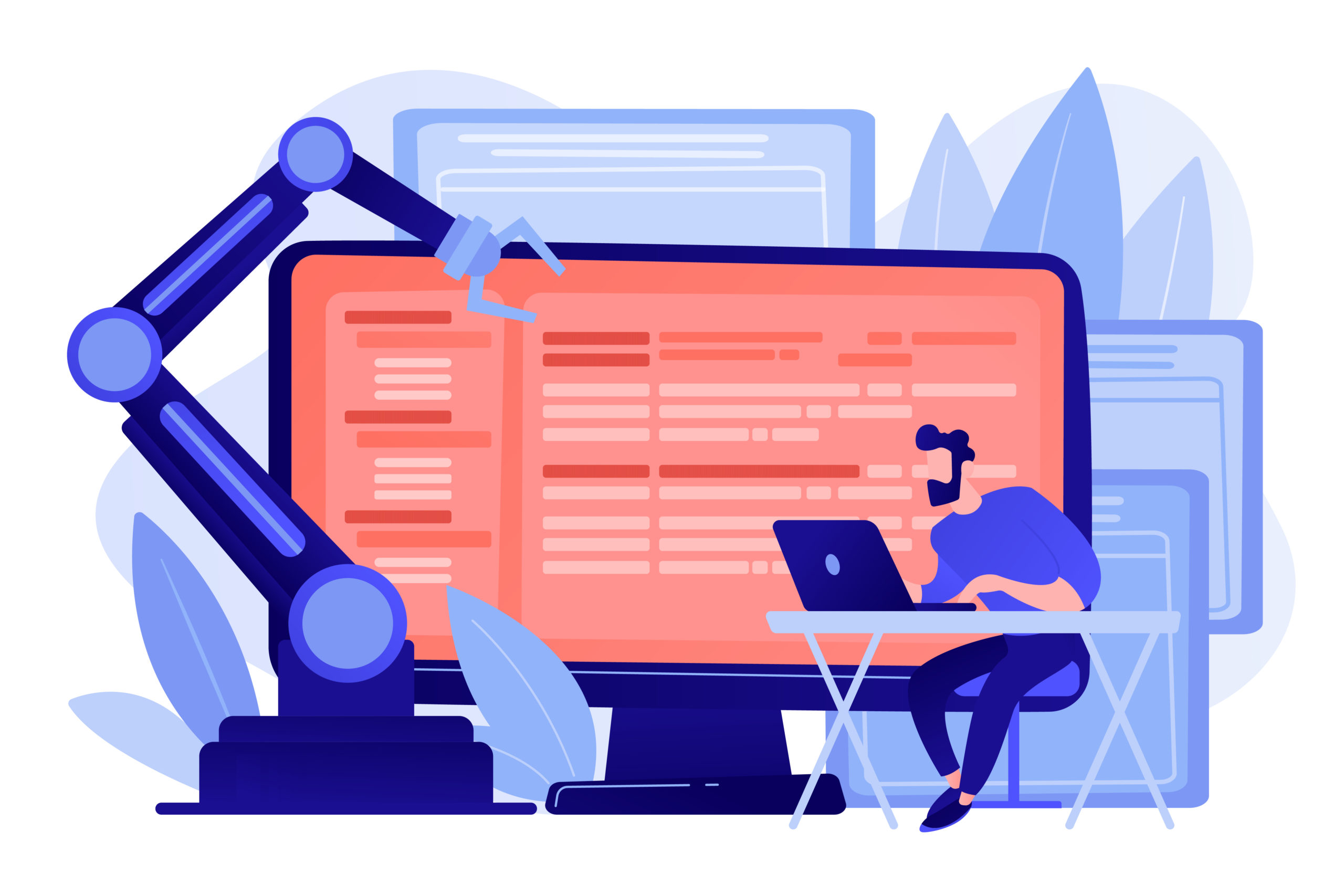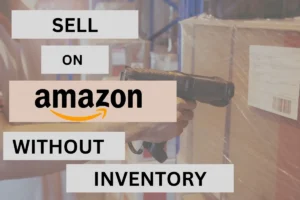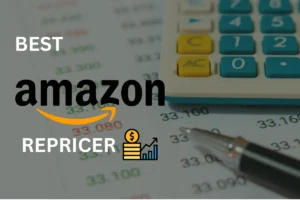Dropshipping is a business model that has gained popularity in recent years due to its low startup costs and the potential for high profits. Many entrepreneurs are turning to dropshipping as a way to start an online business without the need for a physical storefront or large inventory.
However, for those who are unfamiliar with dropshipping, it can be a confusing concept to understand. In this article, we will explore the fundamentals of dropshipping, including how it works, the benefits and drawbacks of the business model, and how to get started in the dropshipping industry.
By the end of this guide, you will have a comprehensive understanding of dropshipping and the knowledge needed to start your own successful dropshipping business.
Table of Contents
- What is Dropshipping?
- How does Dropshipping Work
- Pros of Dropshipping
- Cons of Dropshipping
- Dropshipping Platforms
- How to Start a Dropshipping Business
- Common Dropshipping FAQs
What is Dropshipping?
Put simply, dropshipping is a business model that allows entrepreneurs to run an online store without having to manage inventory. Instead, when a product is sold, they purchase the item from a third-party supplier who ships it to the customer.
With this, you may be thinking, “what does the seller do?”
Essentially, the most important job of the seller is to create an effective, compliant online storefront. This includes finding a platform, partnering with a reliable supplier, and finding the right products.
Seems easy right?
In some ways, it is. However, as with any job, it comes with its own set of challenges.
How Does Dropshipping Work?
For dropshipping to work, there are certain key players that need to participate; the seller (you), the platform on which you will sell your products, the supplier (also known as the dropshipper), and the customer.
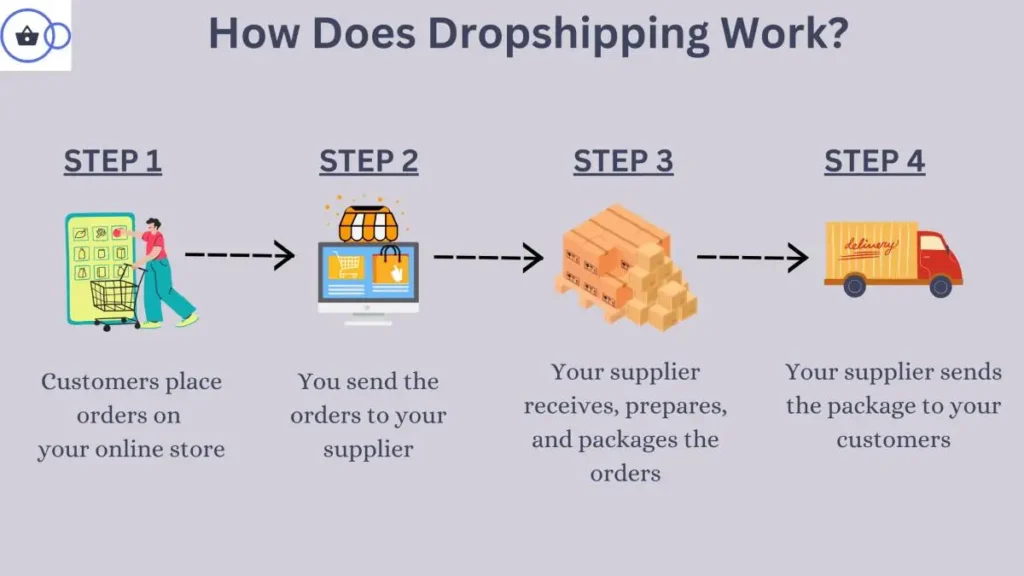
The Key Players and Their Roles in Dropshipping
After exploring what the typical dropshipping process looks like, you might have noticed that there are several key players involved. That said, your success will be heavily reliant on a few key parties.
The following are the key players involved in dropshipping and their roles in your success:
The Seller
The seller, or your role, is the most important role in the dropshipping process. As the seller, you are responsible for setting up your storefront, placing orders with suppliers, and ensuring a positive customer experience.
As the seller, you are also fully liable for any transactions that take place between you and your customers. That said, most platforms have built-in fraud detection and data protection measures to ensure your customers have a secure experience.
The Platform
The platform, or marketplace, is the foundation of any successful dropshipping business. Platforms such as Amazon and Walmart offer a variety of tools that make it easy to manage your products. It is, however, very important that you follow their guidelines to ensure you do not run into any issues.
The Supplier
Your supplier is responsible for producing and shipping the products you offer to your customers. Thus, it’s important to maintain a good relationship with your supplier(s) so that orders can be shipped out promptly and accurately.
Additionally, you should ensure that your supplier’s products meet all relevant safety standards and regulations that your platform requires.
To ensure that your supplier(s) are meeting their obligations, it is important to establish and maintain communication with them regularly. This includes discussing production timelines, cost and quality control measures, product availability, and any other issues they might have.
The Customer
Like any business, the customer is the most important part of the supply chain. That said, it is important to ensure that the customer experience on your platform is as seamless as possible.
This means providing clear product descriptions, making sure that their order is fulfilled quickly, and providing reliable customer support.
To help ensure customer satisfaction, you may choose to automate certain processes, such as order tracking and confirmation emails. By automating these processes, you can ensure that customers get their orders on time and that their inquiries are answered.
Pros of Dropshipping
Here are some of the pros of dropshipping:
1. Low startup costs
One of the most significant advantages of dropshipping is the low startup costs required. Since you don’t need to purchase inventory upfront, you can start your business with minimal investment.
2. No inventory management
With dropshipping, you don’t have to worry about managing inventory or storing products. The supplier takes care of everything, so you can focus on other aspects of your business.
3. Wide range of products
Dropshipping allows you to offer a wide range of products without having to invest in inventory upfront. This enables you to test different products and niches and determine what sells best without having to commit to purchasing large quantities.
4. Location independence
Since you don’t need to manage inventory, you can run your dropshipping business from anywhere in the world with an internet connection.
5. Easy scalability
As your business grows, you can easily scale up by adding new products and suppliers without having to worry about increasing your inventory storage space or hiring more employees.
6. Lower risk
With dropshipping, you don’t have to purchase inventory upfront, which means you’re not risking your money on products that may not sell. This allows you to test different products and niches without incurring significant financial risk.
7. Flexibility
Dropshipping allows you to be flexible with your business since you’re not tied to any specific location, inventory, or product niche. You can adjust your business strategy as needed to accommodate changes in the market or customer demand.
Cons of Dropshipping
Like every other business, dropshipping also has its cons. Here are some of the drawbacks of the dropshipping model:
1. Limited control over shipping and fulfillment
Since you’re relying on the supplier to handle shipping and fulfillment, you have limited control over the process. This can lead to longer shipping times, higher shipping costs, and poor customer service.
2. Quality control issues
Since you’re not handling the products yourself, there’s a higher risk of quality control issues. If the supplier ships a defective or low-quality product, it reflects poorly on your business.
3. Inventory and stock issues
While not having to manage inventory is a pro of dropshipping, it can also be a con. Since you’re not managing inventory, you’re relying on the supplier to have stock of the products you’re selling. If they run out of stock, you may need to find a new supplier or risk losing sales.
4. Competitive market
Dropshipping has become a popular business model, which means there’s a lot of competition in the market. It can be challenging to stand out among other dropshipping businesses, particularly if you’re selling products in a popular niche.
5. Shipping and fulfillment complications
When shipping internationally or across borders, there may be customs fees, taxes, and other regulations that can complicate the shipping process. This can lead to additional costs and delays that can impact customer satisfaction.
Dropshipping Platforms
When it comes to choosing your platform, for example, there are a number of factors to consider. A huge consideration is the traffic that the platform brings.
For example, Walmart and Amazon have millions of buyers whereas Shopify requires you to get your own buyers. Therefore, it’s important to research each platform carefully before selecting the one that best fits your needs.
Furthermore, the platform you choose will determine the tools you have at your disposal. For example, some platforms offer built-in analytics that can provide useful insights about customer behavior.
Others, however, may offer more advanced features such as marketing automation and A/B testing capabilities.
Finally, the cost of each platform will also play a factor in making your selection. Many platforms have different pricing plans that can fit any budget. Therefore, it’s important to consider how much you are willing to spend and what features you need.
Ultimately, the right platform depends on your business needs, budget, and goals. That said, here are some of the most popular platforms for dropshipping in 2023:
Amazon
With its powerful infrastructure and tools, Amazon is a great platform to get started with e-commerce. Whether you are looking to get started or grow an existing enterprise, Amazon has the technology and infrastructure to help.
From product listings and inventory control to order tracking, the e-commerce giant makes drop shipping easy.
That said, the convenience of listing management, fulfillment services, and other tools makes Amazon an appealing platform to many entrepreneurs.
To learn more about dropshipping on Amazon, see our Comprehensive Guide to Amazon Dropshipping for 2023.
Walmart
Alongside Amazon, Walmart is another great platform for entrepreneurs looking to start up a dropshipping business.
Backed by the world’s largest retail chain, Walmart offers an easy-to-use platform that provides entrepreneurs access to millions of consumers.
Moreover, unlike Amazon, the retail giant requires no monthly fees to sell on their platform.
This makes Walmart an attractive option for those looking to begin dropshipping without worrying about extra monthly costs. Of course, we don’t expect you to navigate the ever-changing world of e-commerce alone.
We have a comprehensive Walmart dropshipping guide you can consult to learn more about this topic.
Other Dropshipping Platforms
While Amazon and Walmart are great for dropshipping, there are many other platforms that are commonly used by dropshippers. Shopify and eBay are some of the most popular options available.
When looking to use other dropshipping platforms, it’s important to understand their unique features and capabilities. Shopify, for example, is a great platform for those looking to test the market and create a Private Label brand.
eBay, on the other hand, offers great opportunities for niche markets or used products.
By researching different dropshipping platforms, you can discover the ones that best match your needs and preferences.
How To Start A Dropshipping Business
Now that we’ve established what dropshipping is and the different platforms available let’s take a look at how to start dropshipping.
Starting a dropshipping business typically follows nine (9) steps. But note that these steps can vary depending on the platform and product you use.
1. Pick a Platform To Sell On
The first step for dropshipping is selecting the platform you want to use. There are various dropshipping platforms to choose from, including Amazon, Walmart, eBay, and Shopify.
While choosing your platform, remember to consider factors such as fees, customer service, and ease of use. This will help you find the right platform for your dropshipping business.
2. Pick a Supplier (or Many) To Fulfill From
Once you’ve chosen your platform, it’s time to pick the supplier(s) who will provide you with the products. This is one of the most important steps, as it’ll determine the types of products you can sell.
While there are many suppliers out there, it’s important to do your research and make sure you’re choosing a reputable one. You also may want to consider factors such as pricing, product selection, and shipping times.
3. List Your Items
Once you’ve settled on a platform and supplier, it’s time to list your items. Depending on the platform you’ve chosen, this step may be easy or require a more manual process.
When listing your items, make sure to include accurate information and detailed product descriptions. This will help ensure customers find what they’re looking for, as well as give them all the details about your products.
If you’re looking to skip this step, no problem! There are various dropshipping software that can automate the process for you.
4. Drive Traffic To Get Sales (if Not a Marketplace Site)
It’s important to drive targeted traffic to your website if you’re not using a marketplace like Amazon or eBay.
You can do this by creating content, investing in paid advertising, using influencers, and more. The key is to find the right channels and strategies that work best for you and focus on those.
5. Order Received by Seller
Now that you have the traffic and customers coming in, you will receive orders from them on your website. Once an order is placed, you will need to process the payment and place the order through your supplier.
With this, it is important to keep track of all orders placed by customers. This will allow you to stay on top of customer service, returns, refunds, and other issues that may arise.
6. Customer Gets Order Confirmation
Once a customer has placed an order, they should receive an order confirmation email with their order details. This email should include information such as what was purchased, when it was shipped, and any other relevant information.
Customers should also be able to track their orders’ progress. This ensures customers stay informed about the status of their order and can contact you should any issues arise.
7. Seller Passes the Order to the Supplier
Once the customer has placed an order, it’s time for you to pass on the order details to your supplier. This should be done promptly and accurately to ensure that customers receive their products in a timely manner.
That said, your supplier should be provided with all of the necessary information about the order. This includes product information, pricing and shipping details, customer contact information, and payment.
In addition, you should make sure that the supplier is aware of any special instructions or requests from the customer. Once all of these items have been taken care of, your supplier can then begin fulfilling the order.
8. Supplier Fulfills the Order
Once the order is sent to your supplier, they will be responsible for fulfilling it. This typically involves packing and shipping the products to the customer’s address.
The supplier may also provide any additional services, such as tracking numbers for you to track your customers’ orders. In some cases, your supplier may also handle customer service inquiries related to the order.
9. Customer Receives the Merchandise
Once the supplier has fulfilled the order, it is then up to them to ship the products to your customer. Depending on their shipping methods, delivery times can range anywhere from a few days to a few weeks.
It’s important to be honest with your customers regarding the expected delivery times. Once their order arrives, they can then enjoy the benefits of the products they purchased.
Your job, however, does not stop there. After the order has been delivered, you must stay in contact with your customer. If they have any questions or complaints about their order, it’s important that you are available to help.
Common Dropshipping FAQs
Now that you know the basics of dropshipping, you may be ready to get started with your own business.
Here are some of the most common questions asked when starting a dropshipping business:
What is the most important thing in dropshipping?
While the dropshipping model is relatively simple, the most important factor for success is following your platform’s guidelines. This includes following shipping laws and delivering the correct product in a timely manner.
Failure to comply with these requirements can lead to the suspension or even termination of your account.
Therefore, it’s important to understand the terms of service of your marketplace before setting up a dropshipping business
What are some of the expenses you might expect to incur if you begin dropshipping?
While dropshipping may seem like a relatively inexpensive business model, there are still some costs associated with it that you should be aware of before starting
Some of these costs include:
- Platform fees
- Supplier costs
- Costs of Goods (COGS)
- Shipping (this is sometimes included in the COGS)
- Traffic (if you are not using a marketplace site)
To find out more about the fees associated with dropshipping, check with the platform and supplier you intend to use. Most platforms will have a pricing page where you can learn more about the fees associated with using their services.
Is it too late to get started with dropshipping today?
While there are undoubtedly more competitors for dropshipping today, there is still plenty of opportunity available.
To be successful in this industry, it’s important to stay ahead of the competition.
To do this, select the right products, find reliable suppliers, and keep up with your analytics. You can also take advantage of automated solutions and technologies to help streamline your operations.
Fortunately, there are plenty of tools available today that make it easy for anyone to get started with dropshipping effectively.
Is dropshipping legal?
Yes, dropshipping is legal. It’s a legitimate business model that involves selling products to customers without holding inventory or fulfilling orders yourself.
However, as with any business, there are certain regulations and laws that must be followed, and these regulations could differ from platform to platform.
Ensure you read the seller guidelines of the platform you want to sell on and thoroughly understand them so you don’t land into trouble.
How much money can you make with dropshipping?
The amount of money you can make with dropshipping depends on several factors, such as the products you’re selling, the niche you’re in, your marketing strategy, and the platform you use. Some dropshippers make a few hundred dollars per month, while others earn six-figure incomes or more.
Ultimately, your success will depend on your ability to identify profitable products, target the right audience, and effectively market your business.
Do I need to have a lot of money to start dropshipping?
No, you don’t need a lot of money to start dropshipping. One of the main advantages of this business model is that you don’t need to purchase inventory upfront, so you can start with a small budget.
However, you will need to invest in other aspects of your business, such as website hosting, marketing, and advertising, so it’s important to budget for these expenses.
What do I need to know before dropshipping?
First things first, dropshipping still works in 2023 and beyond.
The key to success with dropshipping is understanding the ins and outs of the process. This includes knowing the right supplier and product to source, leveraging automation tools, and providing a great customer experience.
Sounds like a lot of work, right?
Luckily, you’re not alone.
At Ecom Circles, we provide a suite of features to help e-commerce entrepreneurs find success in the dropshipping industry. From product research to inventory management, our platform provides you with the resources you need to maximize your profit potential.
We even offer automated pricing rules and order fulfillment services to streamline the entire process. With our comprehensive platform, you can rest assured that your store’s success is in good hands.
To learn more about what we offer and how to get started, book a call with us today. Our team of experts is always available to answer any questions you may have!

